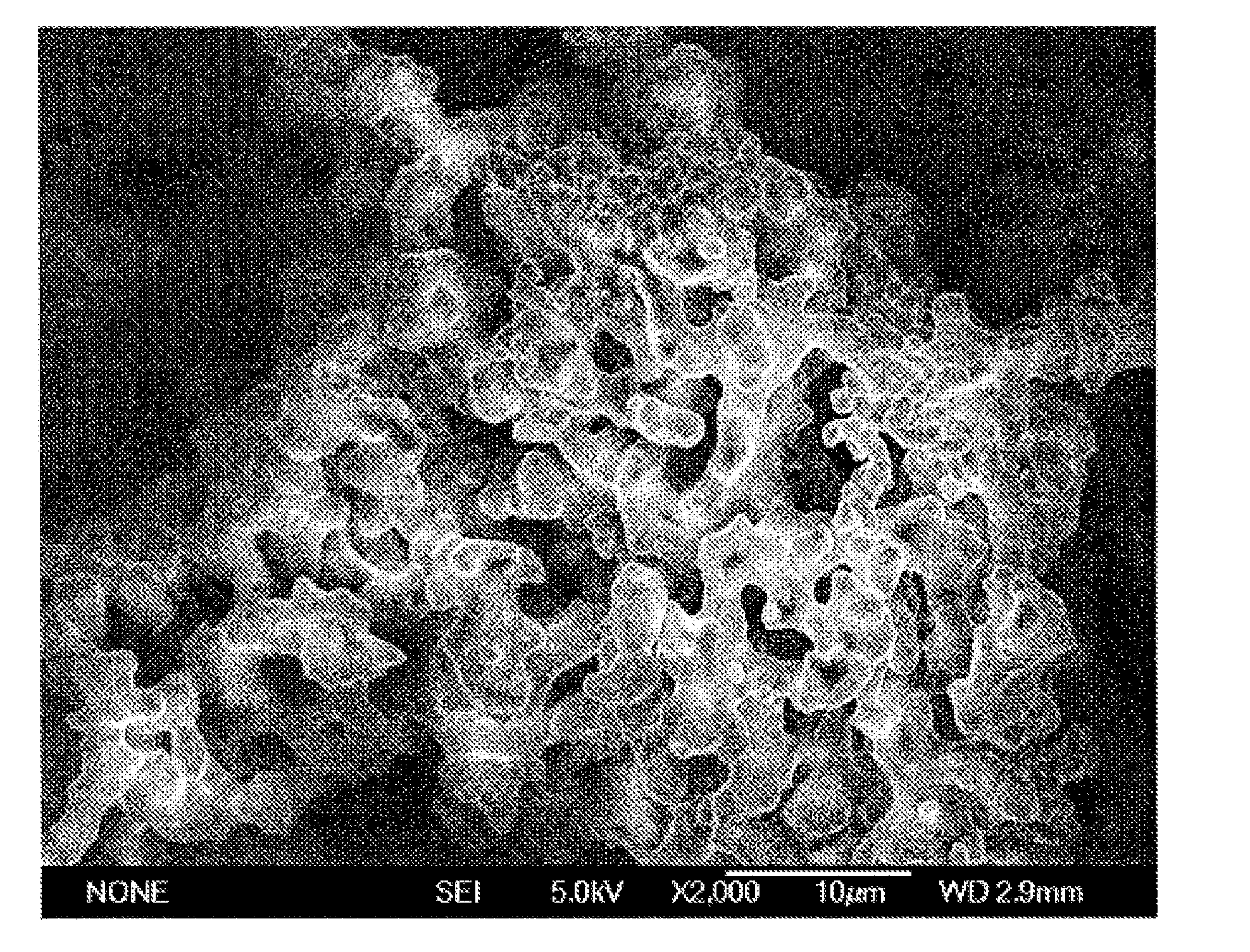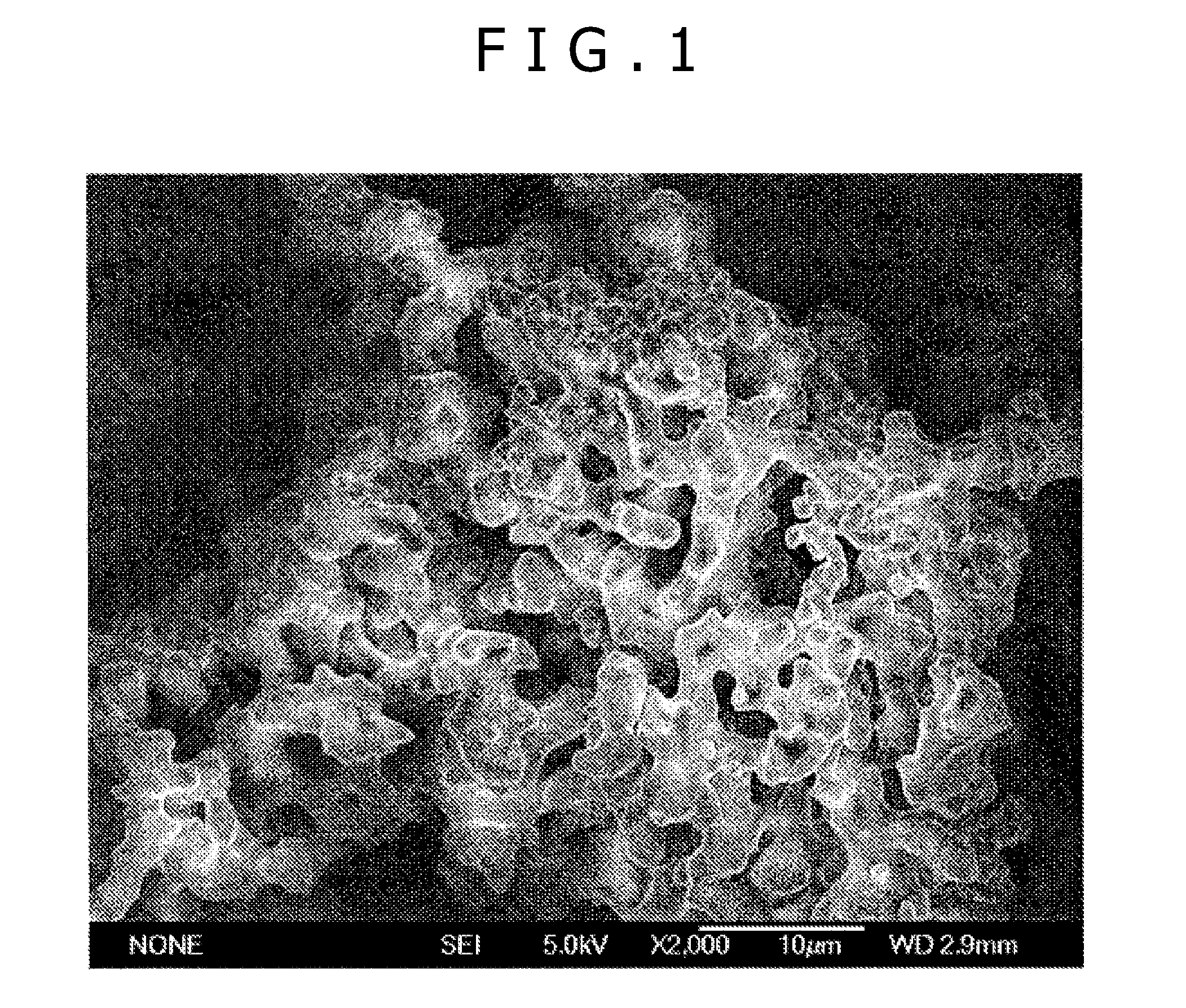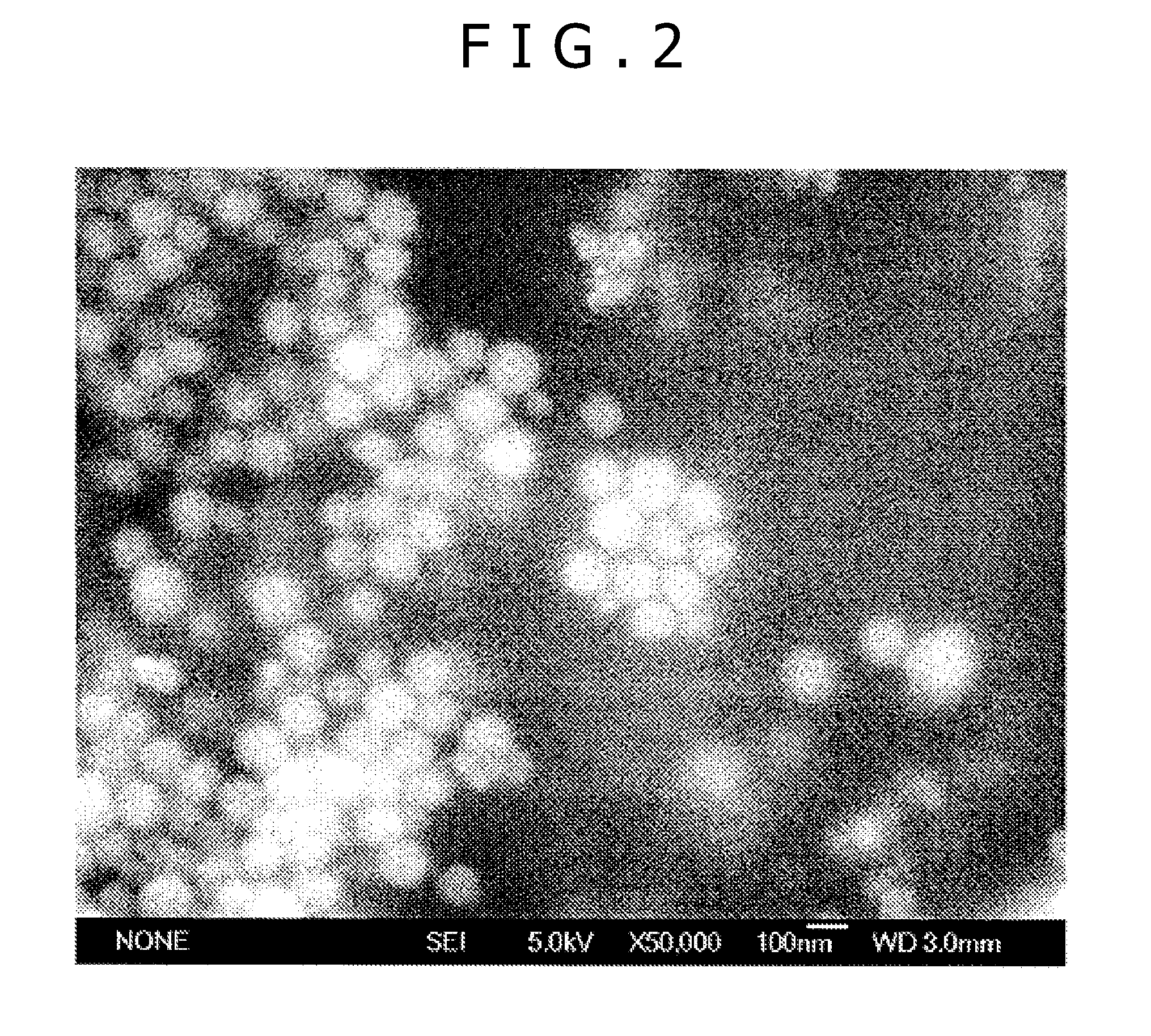Hybrid silica polymer, method for production thererof, and proton-conducting material
a technology of hybrid silica and polymer, which is applied in the direction of non-metal conductors, cell components, sustainable manufacturing/processing, etc., can solve the problems of phosphosilicate not being satisfactory in proton conductivity, its proton conductivity is so sensitive to humidity that it is below 10sup>6 /sup>s/cm, etc., to achieve good mechanical stability, good thermal stability, and economic production
- Summary
- Abstract
- Description
- Claims
- Application Information
AI Technical Summary
Benefits of technology
Problems solved by technology
Method used
Image
Examples
example 1
Synthesis of Hybrid Silica Polymer
(1) Synthesis of Gel Several kinds of gels were prepared from the following starting materials varying in molar ratio in the specified range.
[0032] 3-MPTES (3-mercaptopropyltriethoxysilane): 1.0
[0033] Surfactant: 0.1 to 0.8
[0034] H2O: 30 to 120
[0035] NaOH: 0.2 to 2
(Typical Example of Synthesis)
[0036] An aqueous solution containing 0.42 g of hexadecyltrimethyammonium bromide in 40 g of water was mixed with an aqueous solution containing 1.30 g of NaOH in 15 g of water. To the resulting solution was added continuously with stirring 11.95 g of 3-MPTES (3-mercaptopropyltriethoxysilane) to give a clear solution. Upon stirring for 90 minutes, the clear solution gave a uniform gel (with pH 12.66). This gel was divided into four portions (designated as A, B, C, and D). Each portion was allowed to stand or heated to remove water under the following conditions. [0037] Portion A: standing at room temperature for 7 days in an open petri dish. [0038] Po...
example 2
Synthesis of Hybrid Silica Polymer
(1) Synthesis of Gel
[0051] Several kinds of gels were prepared from the following starting materials varying in molar ratio in the specified range.
[0052] 3-MPTES (3-mercaptopropyltriethoxysilane): 1.0
[0053] Surfactant: 0.005 to 0.6
[0054] H2O: 30 to 120
[0055] NH4OH: 2.82
(Typical Example of Synthesis)
[0056] Synthesis started with addition of 7.58 g of hexadecyltrimethyammonium bromide to 100 g of water with stirring over 5 minutes. This step was followed by addition of 25.1 g of 3-MPTES with stirring over 10 minutes and addition of 15.5 mL of ammonium hydroxide (30% aqueous solution) with stirring over 30 minutes. The resulting milky white solution was uniformly heated in a Teflon-coated stainless steel autoclave at 100° C. for 3 days. The reaction product was centrifugally separated, washed with deionized water, and finally dried at 100° C. for 1 day. Incidentally, the pressure of the autoclave was kept at 1 MPa (or about 10 atm).
[0057] (2...
PUM
| Property | Measurement | Unit |
|---|---|---|
| Temperature | aaaaa | aaaaa |
| Temperature | aaaaa | aaaaa |
| Temperature | aaaaa | aaaaa |
Abstract
Description
Claims
Application Information
 Login to View More
Login to View More - R&D
- Intellectual Property
- Life Sciences
- Materials
- Tech Scout
- Unparalleled Data Quality
- Higher Quality Content
- 60% Fewer Hallucinations
Browse by: Latest US Patents, China's latest patents, Technical Efficacy Thesaurus, Application Domain, Technology Topic, Popular Technical Reports.
© 2025 PatSnap. All rights reserved.Legal|Privacy policy|Modern Slavery Act Transparency Statement|Sitemap|About US| Contact US: help@patsnap.com



